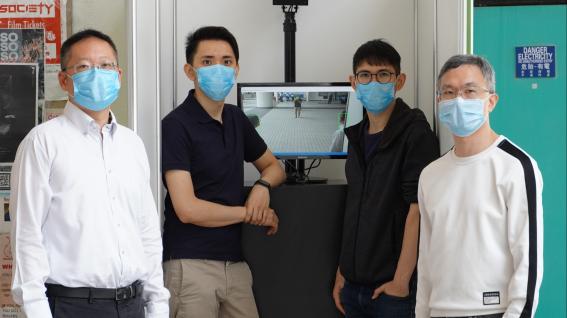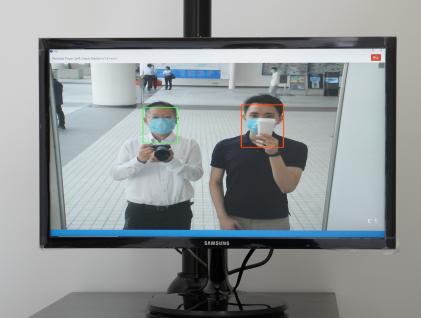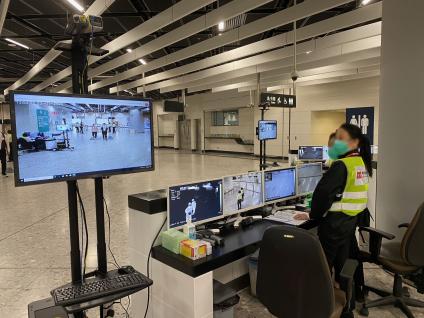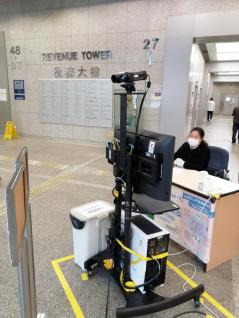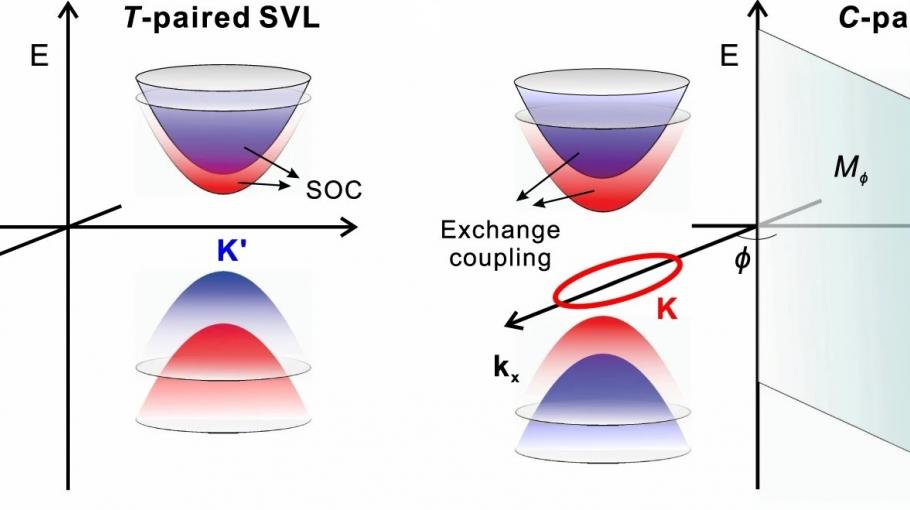Researchers from The Hong Kong University of Science and Technology (HKUST) have developed a novel Smart Fever Screening System (SFSS), which could help officials at the border points to easily identify and distinguish passengers with fever. The system has been implemented at various control points, government facilities and the University in the fight against Covid-19.
Since the SARS (Severe Acute Respiratory Syndrome) outbreak in 2003, thermal imaging detectors have been widely deployed at border points for screening of inbound travelers with fever – an important symptom for patients of SARS, Covid-19 and other infectious diseases. However, officers would have to monitor two screens on both thermal and color (CCTV) images in order to track the unwell person within a matter of seconds.
Now, using artificial intelligence, real-time tracking and big data analysis, a multi-disciplinary research team led by Prof. Richard SO from the Department of Industrial Engineering and Decision Analytics at HKUST, has devised a new system which is not only more accurate in detecting fevered suspects even with their faces partially occluded, but can also enhance operation efficiency by combining thermal and color images onto the same screen. Officers can immediately recognize the unwell person who would be bracketed in red and an alert signal will be sounded upon such detection.
Different from regular fever monitoring systems which use mainly infrared cameras, the new AI and deep learning-based system is more accurate in terms of facial and heat detection. Using deep learning and the science of anthropometry, the system can perform “visual closure”* and track a human face even if it is covered by a mask and partially occluded at the same time. The system is designed to detect and pick up a fever suspect walking in a crowd. Detection of temperature also tends to be more accurate as it relies on computer algorithms instead of human judgement according to the tones of thermal images. The system also compensates the effects of detection distances and environmental factors such as heat source at the background. Moreover, as the tracking focuses distinctively on the face, the detection result is unlikely to be affected by hot objects carried by that person unless the objects are directly over the person’s face.
The research team represents a unique combination of expertise in machine learning, bio-engineering, and parallel networking. Team members include Prof. Bertram SHI, Head of Department of Electronic and Computer Engineering; Prof. Albert WONG, Senior Lecturer from the same Department and Prof. Qifeng CHEN, Assistant Professor from Department of Computer Science and Engineering.
Without keeping any personal data, the system is built on a cross-platform database program for big data analytics, allowing devices from different areas to join into a bigger network, which makes tracking of the fevered suspects much easier. With big data, deep learning and human sciences, the system can also learn over time to become smarter and even more accurate.
During the early stage of the Covid-19 outbreak in late January, the team has developed and delivered 16 SFSS systems for deployment at major border points such as the Hong Kong International Airport, and other major six boundary control points, and at later dates various government offices upon gradual resumption of public services. The system can also be useful for venues like hospitals, libraries, elderly homes and schools.
“Fever screening has always been the first and an important gatekeeper in maintaining public health. Thanks to the Electrical and Mechanical Services Department (EMSD), our system can be applied at major control points during this critical period. We are glad that our home-grown technology can contribute to safeguarding public health by providing the authorities with a more efficient solution,” said Prof. So.
This system is an extension of a completed project on big data platform for smart transportation sponsored by Innovation and Technology Fund (ITF) and Thales Group in late 2017. The HKUST team successfully provided a match I&T solution on the E&M InnoPortal and the solution has won the Grand Prize in “Category I — An Invention” of the Hong Kong Institution of Engineers Innovation Awards for Young Members 2019.
*Visual closure is the ability to correctly perceive an object, even when it is partly hidden
About The Hong Kong University of Science and Technology
The Hong Kong University of Science and Technology (HKUST) (www.ust.hk) is a world-class research intensive university that focuses on science, technology and business as well as humanities and social science. HKUST offers an international campus, and a holistic and interdisciplinary pedagogy to nurture well-rounded graduates with global vision, a strong entrepreneurial spirit and innovative thinking. HKUST attained the highest proportion of internationally excellent research work in the Research Assessment Exercise 2014 of Hong Kong’s University Grants Committee, and is ranked as the world’s best young university in Times Higher Education’s Young University Rankings 2019. Its graduates were ranked 10th worldwide and top in Greater China in Global University Employability Survey 2019.
For media enquiries, please contact:
Anita Lam
Tel: 2358 6313
Email: anitalam@ust.hk
Jamie Wong
Tel: 3469 2512
Email: jamiewong@ust.hk
